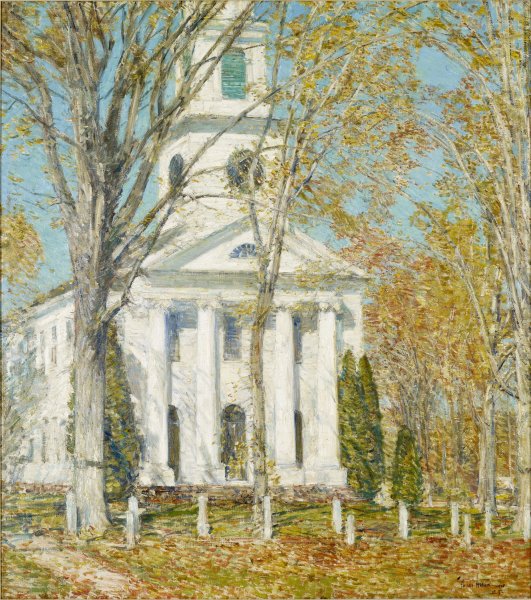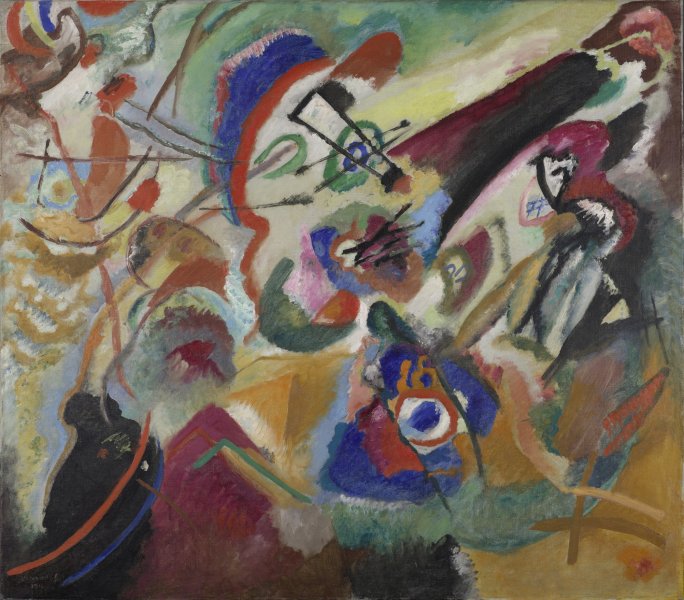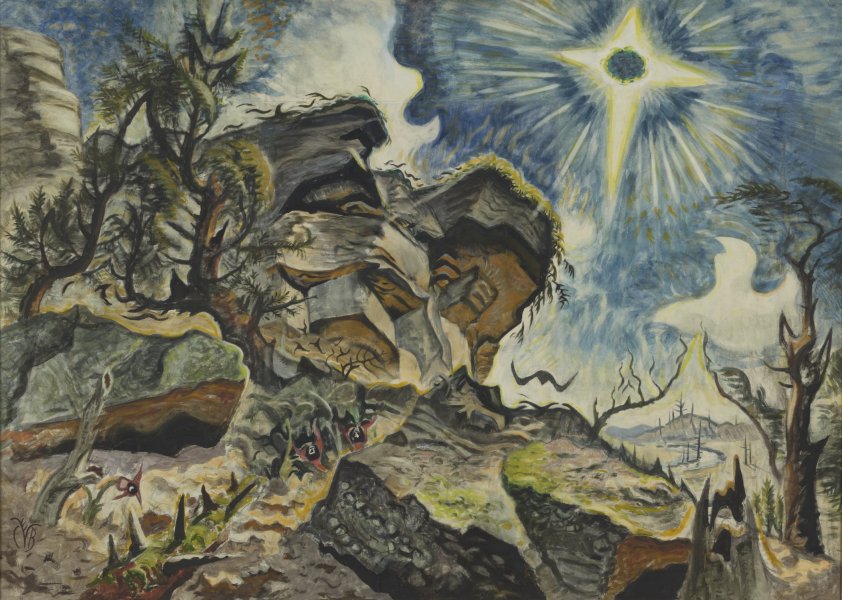Expressionism in American Painting
Saturday, May 10, 1952–Sunday, June 29, 1952

Charles Burchfield (American, 1893–1967). Sun and Rocks, 1918–1950. Watercolor and gouache on paper, 40 x 56 inches (101.6 x 142.2 cm). Collection Albright-Knox Art Gallery, Buffalo, New York; Room of Contemporary Art Fund, 1953 (RCA1953:4). © Charles E. Burchfield Foundation
This exhibition attempted to define the term “Expressionism” and trace its influence in postwar American art. While Expressionism had originally been used to describe the work of a number of artists working in Germany in the first two decades of the twentieth century, by the 1950s its compass had expanded to include a wide range of works unified by a belief that, if the laws of nature were thoroughly understood, the artist could not only penetrate the apparent contradictions and disorder of the visible world to find a greater reality but also create new and valid work out of this exploration. The exhibition featured loans and works from the museum’s collection by artists such as Max Beckmann, Charles Burchfield, Arthur Dove, George Grosz, Philip Guston, Mardsen Hartley, John Marin, and Max Weber.


![Die Wölfe (Balkankrieg) [The Wolves (Balkan War)]](/sites/default/files/styles/callout_fixed_height/public/artwork/1951_001_o2.jpg?itok=yohEmWsS)




